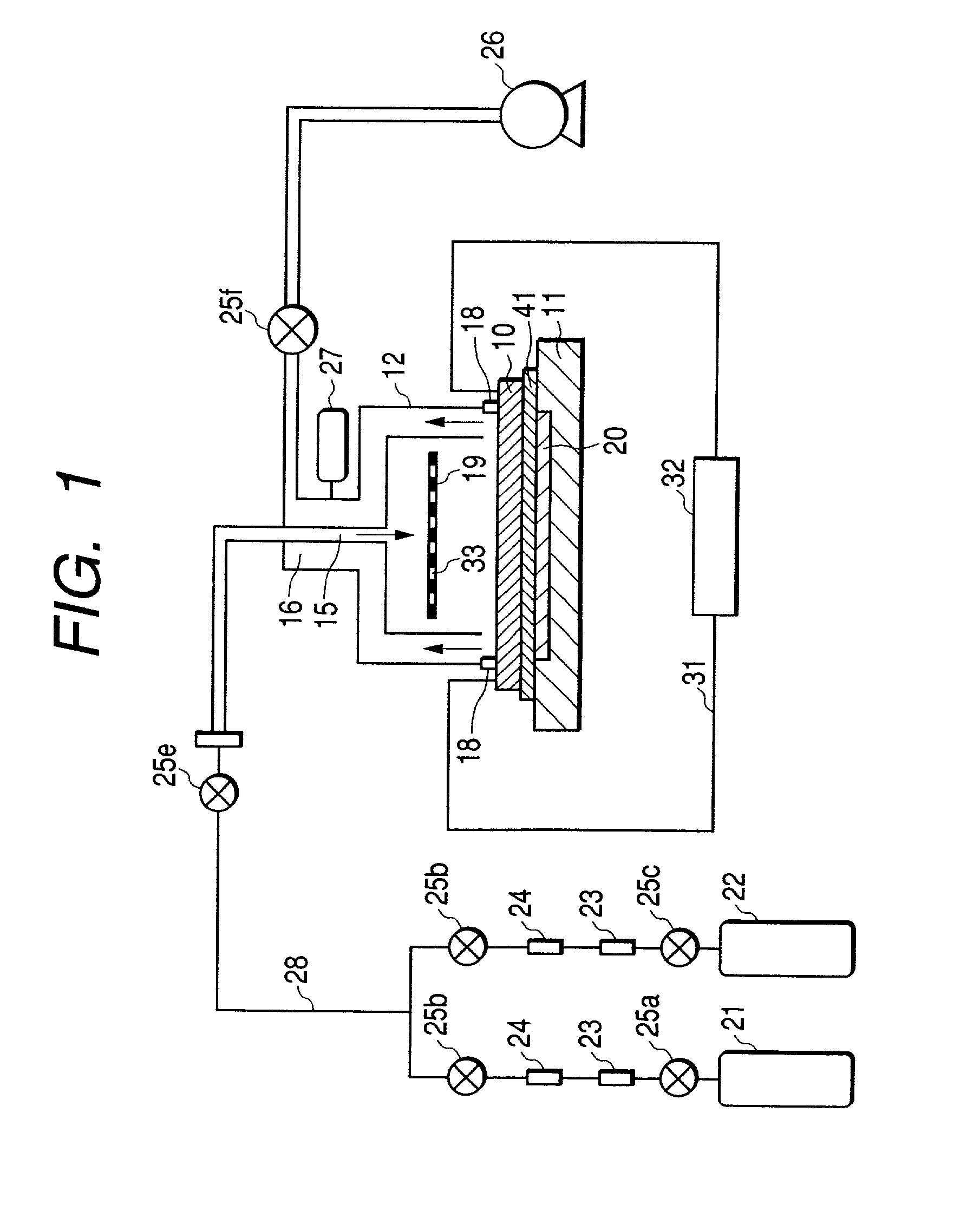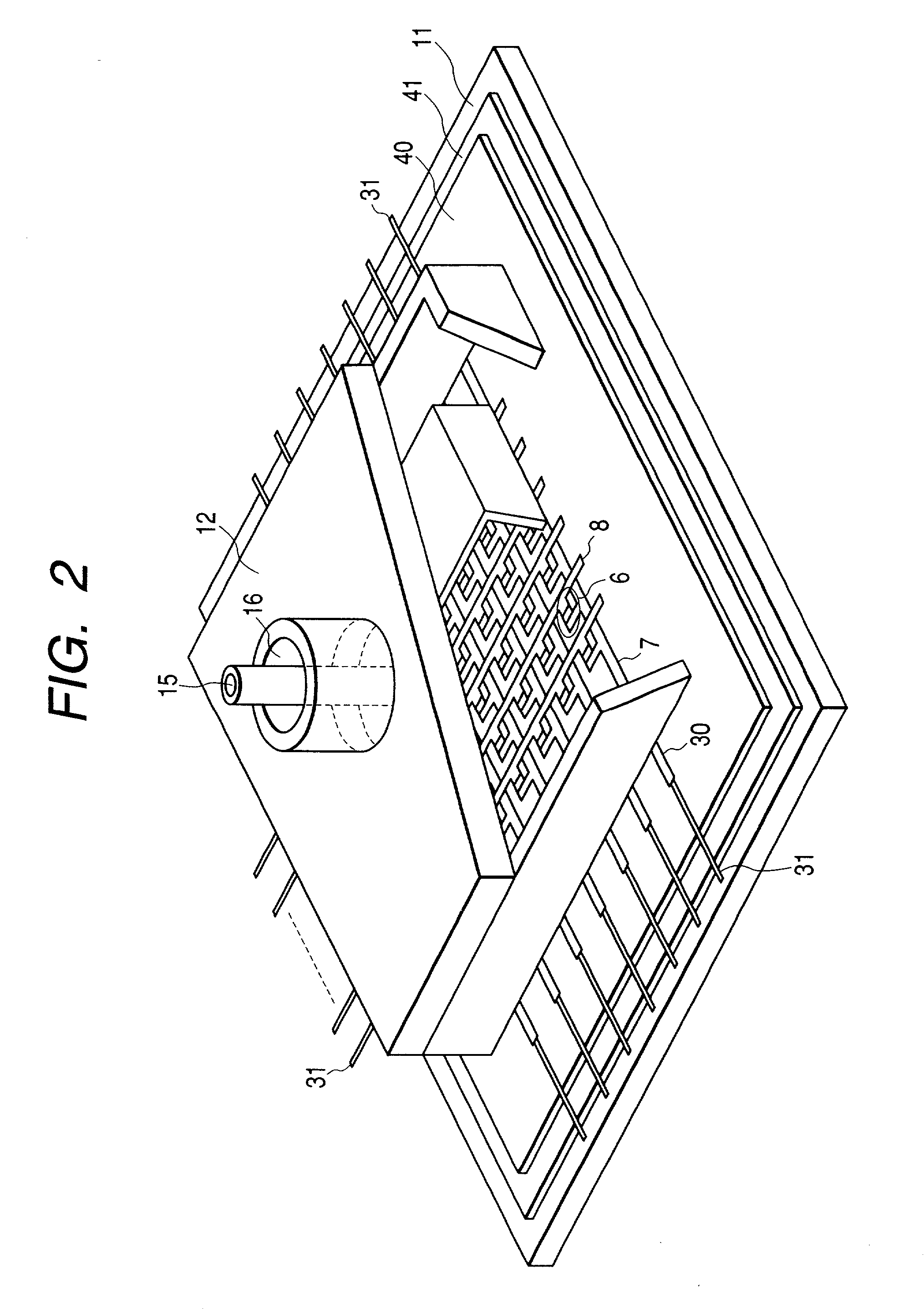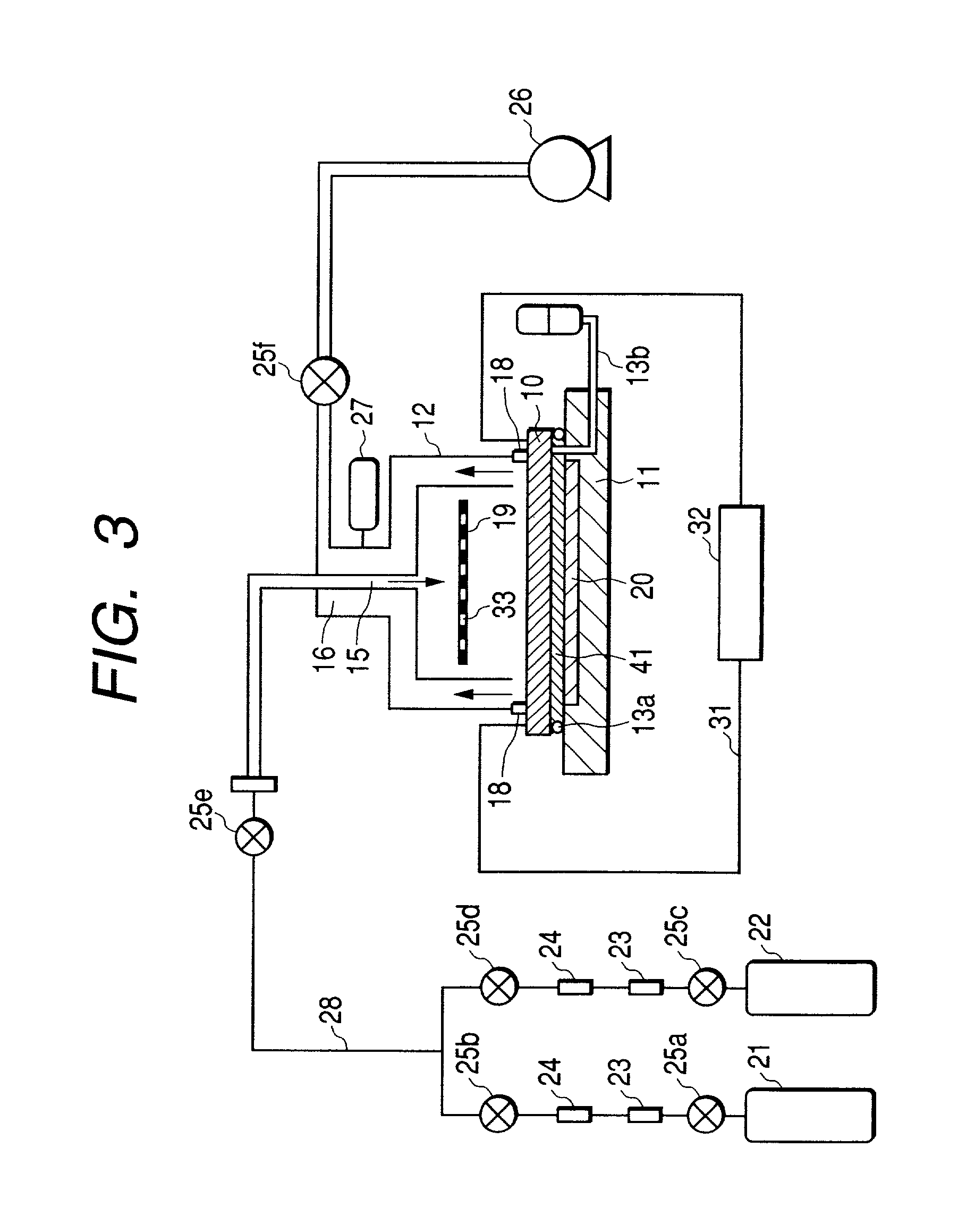Method and apparatus for manufacturing image displaying apparatus
a technology of image displaying apparatus and manufacturing method, which is applied in the manufacture of discharge tube main electrodes, electrode systems, electric discharge tube/lamps, etc., and can solve the problems of vacuum exhaustion of each vacuum chamber, inconvenient use, and long time-consuming
- Summary
- Abstract
- Description
- Claims
- Application Information
AI Technical Summary
Benefits of technology
Problems solved by technology
Method used
Image
Examples
second embodiment
[0145] FIGS. 4 and 5 show a preferred second embodiment mode of the present invention. In FIGS. 4 and 5, reference numeral 14 denotes an auxiliary vacuum container, and reference numeral 17 denotes a gas exhausting path of the auxiliary vacuum container 14. The same members and the same parts as that in FIGS. 1 and 3 are shown by the same reference numerals.
first embodiment
[0146] In the first embodiment mode, in the case that the size of the electron source substrate 10 is large, in order to prevent the electron source substrate 10 from breaking by the pressure difference between the front surface side and the back surface side of the diffusion plate 19, namely, the pressure difference between the pressure inside the vacuum container 12 and the atmospheric pressure, it is necessary to take a measure such as making the electron source substrate 10 into a thickness which can withstand the pressure difference, or relaxing the pressure difference by using a vacuum chucking mechanism as an electron source substrate fixing holding mechanism.
[0147] The second embodiment mode is an example that keeps in mind eliminating the pressure difference or making it small so as not to be a problem when sandwiching the electron substrate 10. In the second embodiment mode, the thickness of the electron source substrate 10 can be made thin, and in the case where the elect...
third embodiment
[0155] Next, a third embodiment mode of the present invention will be described by referring to FIG. 14. In this embodiment mode, in order to prevent the deformation or the damage of the electron source substrate 10 due to the pressure difference of the front and back of the electron source substrate 10, as described above, the substrate holder 207 is provided with an electrostatic chuck 208. The fixture of the electron source substrate 10 by the electrostatic chuck 208 is performed by applying a voltage between the electrode 209 arranged in the electrostatic chuck 208 and the electron source substrate 10 to suck the electron source substrate 10 to the substrate holder 208 by electrostatic force.
[0156] In order for the electron source substrate 10 to hold the predetermined potential, there is formed a conductive film such as an ITO film on the back surface of the electron source substrate 10. Note that, for adsorption of the electron source substrate 10 by the electrostatic chuck me...
PUM
 Login to View More
Login to View More Abstract
Description
Claims
Application Information
 Login to View More
Login to View More - R&D
- Intellectual Property
- Life Sciences
- Materials
- Tech Scout
- Unparalleled Data Quality
- Higher Quality Content
- 60% Fewer Hallucinations
Browse by: Latest US Patents, China's latest patents, Technical Efficacy Thesaurus, Application Domain, Technology Topic, Popular Technical Reports.
© 2025 PatSnap. All rights reserved.Legal|Privacy policy|Modern Slavery Act Transparency Statement|Sitemap|About US| Contact US: help@patsnap.com



